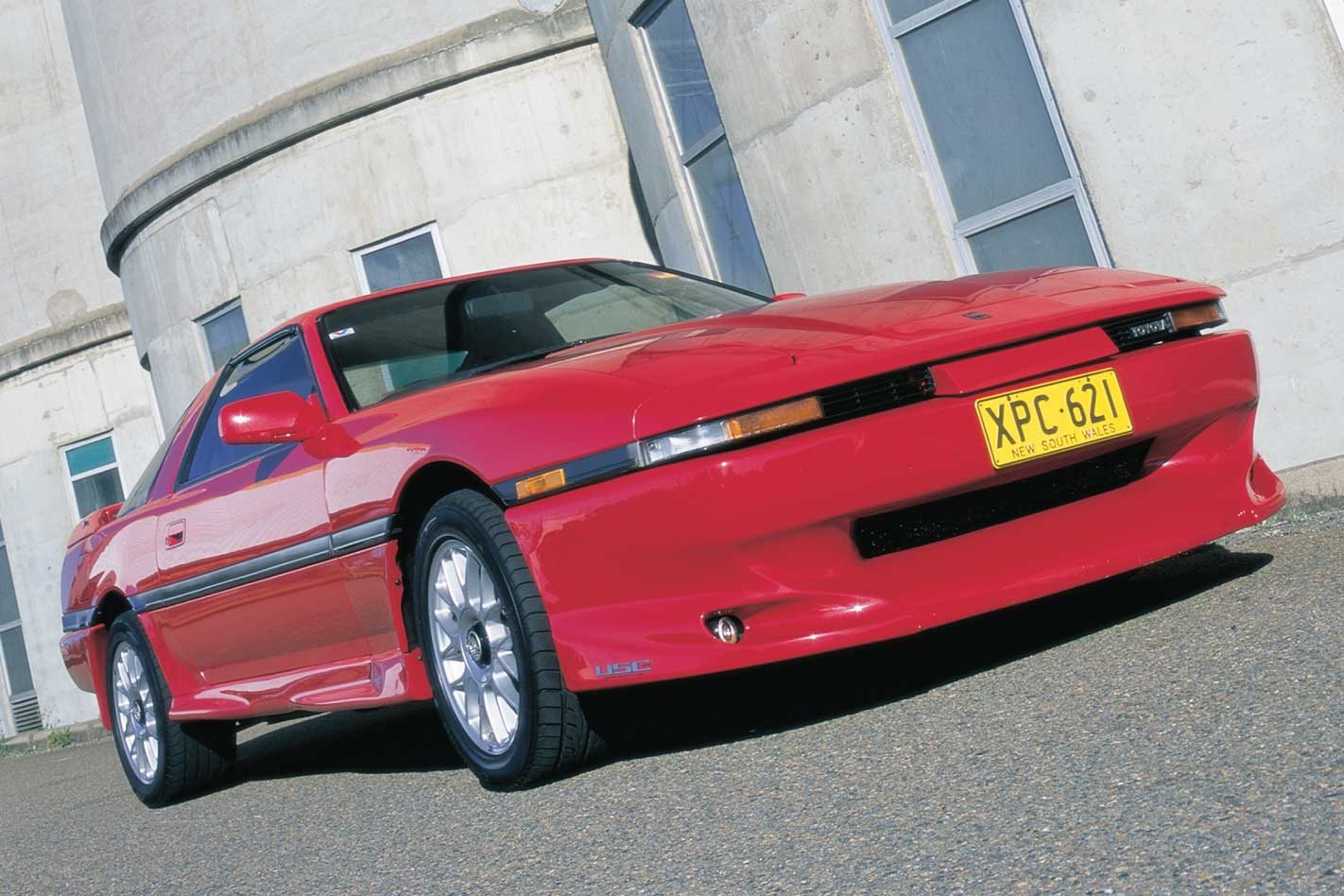Sports cars have always been important to Japanese car-makers. A red-hot sporty in this year’s catalogue is going to create showroom traffic; it’s all down to that old chestnut ‘they came in to look at the red sports car and drove home in the white sedan’. And, it’s fair to say that over the years, the J-folk have cranked out some wild and wonderful contraptions in the name of sports cars.
This feature was originally published in MOTOR’s December 2001 issue
Mitsubishi has its Evo Lancers, Subaru the redoubtable Rex, Nissan the 200SX and Honda, the manic little Integra Type R. But when it comes to bigger-bodied sporties, well, our neighbours to the north don’t always seem to get it right first time.
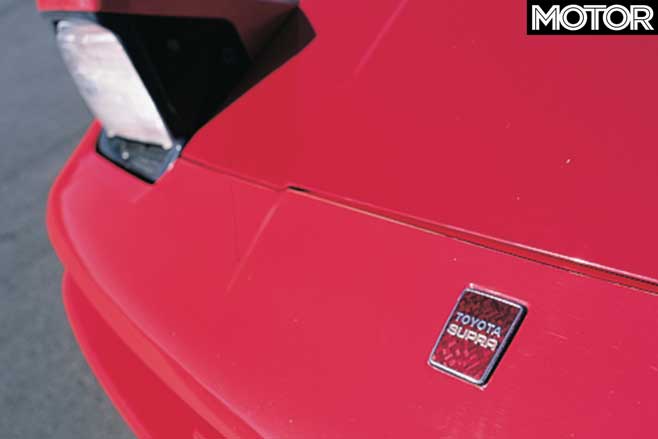
The flip side to that is the Mazda RX-7, which went from mild-mannered (but nice enough) to a stark-raving, twin-turbo monster in its final incarnation. Even Honda had a go and produced a great car, but the bits that made up the NS-X blew the price right out of Lake Reality. And then there’s Toyota.
Apart from later MR2s, Toyota hasn’t really made much of a name for itself in the sports car world. Oh, there have been glimpses of brilliance like the six-cylinder 2000GT, but they’re rarer than Ansett boarding passes these days.
Apart from the first front-driver, the Celica is an affront to sporty drivers everywhere, and these days the Big T has stooped to putting Sportivo badges on Echoes, ferchrissakes. Nope, if you had to name Toyota’s big effort in the name of a big sports car, you’re inevitably drawn to the name Supra. Oh dear.
Way back when
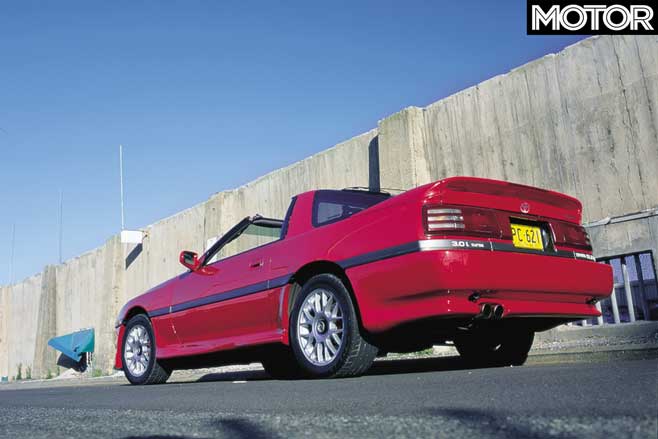
As far as we antipodeans are concerned, the Supra name was born back in 1983 when it lobbed here badged as a Celica Supra. The inference, of course, was that this was some kind of Super Celica and, if it was seen that way, it’s only because the Celica itself was such a damp squib anyway.
On the other hand, the Supra did create a bit of a stir because it offered a whole bunch of stuff most of us hadn’t really been exposed to before.
Electronic fuel-injection was a novelty of the highest order, although a five-speed manual gearbox behind a big (well, 2.8-litre) six-potter was already available in the small-engined versions of both the Commodore and Falcon. And, like the Supra, they had rear-drive, too.

Of course, neither local car had an electronic dash and front and rear discs and fat-for-the-time 225 rubber, while independent suspension all-round hinted at a serious piece of hardware. And we hadn’t seen such a wild set of wheel-arch extensions since the SLR 5000 Toranas.
The in-line six was smooth until you really revved it, and although it felt pretty torquey, with just 103kW at a chugging 4800rpm, it was hardly a quick car. It did weigh a relatively trim 1275kg, but even that couldn’t hide the fact the suspension was just too soft for any serious hooning. It was, like the Nissan 280ZX of the same era, much more at home kerb crawling for lap dancers than it was being caned around a twisty piece of real estate.
Powered up porker
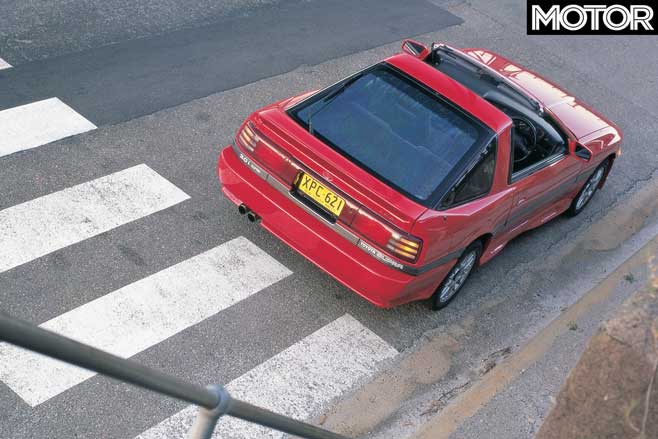
Just as the move to unleaded petrol for 1986 forced changes on most carmakers and importers, so too, did Toyota take the opportunity to bring us a new Supra.
The all-new car was no longer based on the J-Spec Celica and looked bigger in every direction (apart from useable interior space) but in reality, wasn’t. There was also a targa-topped version called the Sportsroof which did nothing for the torsional rigidity of the vehicle, but suited its cruisy feel.
Smoother (no more wheel-arch flares) and less bitsy, the new Supra retained the same overall proportions with a long bonnet, minimal rear overhang and a distinct wedge shape. Pop-up headlights remained and there was really no mistaking its intention.
Until you drove it, that is. It was at that fateful moment that you realised that for all the marketing bluster and E-Type aping proportions, the new Supra was, once again, a marshmallow warrior.
With a stretch to 3.0-litres, the in-line six ground out a claimed 140kW, largely absorbed by the new car’s porky 1510kg kerb mass (the auto weighed another 25kg).
Snail nail
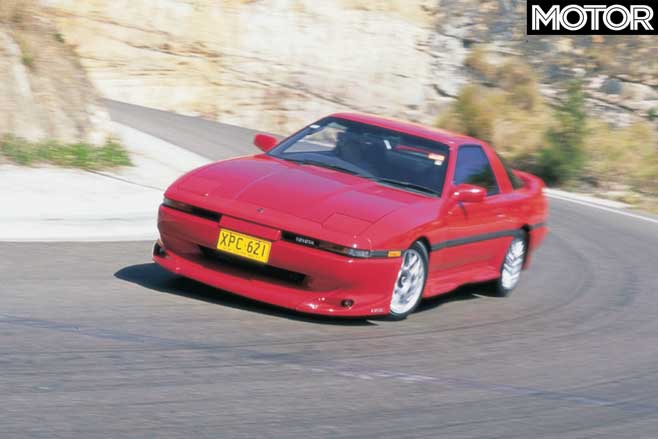
Roll the clocks forward to 1988, and the era of the turbo had arrived; witness the nasty Mazda MX-6 and the more amusing Daihatsu Charade GTti. With such a hefty body and electronic fuel-injection already fitted, a blown Supra could be seen coming from several suburbs away.
But Toyota still figured it needed two bob each way, so it continued with the unblown version and added the Turbo model as the flagship. The turbo engine stayed at 3.0-litres and used the same DOHC head, but power leapt to 173kW which, for 1988, was something else.
More impressively, torque was up a full 99Nm to 344, and it was produced nice and low in the rev range with a big fat surge of grunt that suited the four-speed auto better than the five-speed manual.
So it was relatively quick in a straight line, but nothing could alter the fact that here was a portly old boat that made changing directions more of a chore than it should have been. Throw in the over-assisted power steering and the too-soft springing, and you suddenly had something less than the sum of its parts.
Toyota’s concession to sportiness was to add electrically adjustable dampers which, at the flick of a dash-mounted switch, could be set anywhere from too-soft to way-too-soft. Why’d they bother? Who knows.
Live through this
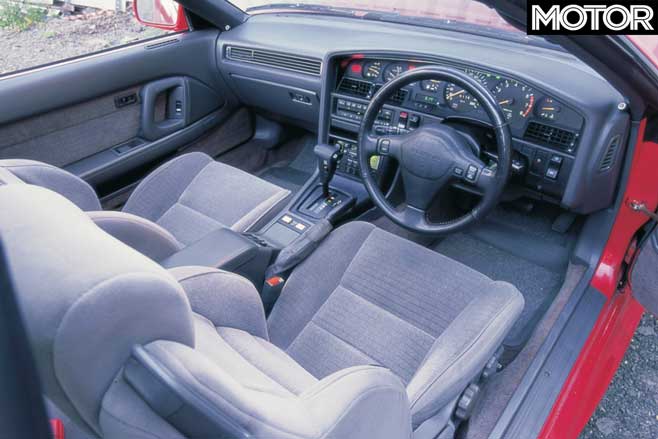
To be perfectly fair, the turbocharged Supra wasn’t without its vaguely likeable points. There was the grunt thing, but even then it was all mid-range with none of that screaming top-end that we’ve come to associate With proper sports cars.
The look of the thing these days is so ‘80s it’s not funny (well, maybe just a bit funny) and the dynamics belong to another age. But if you can live with that, and all you Want is an interstate tourer for two with enough urge to get around B-Doubles, then maybe this could be what you’re looking for.
If, on the other hand, you ’re thinking that the Supra is the Big T’s RX-7 equivalent or in any other way a pukka chap’s car, think again. Frankly, there’s better stuff out there for less money, and for the dough involved, a VN Commodore SS manual is quicker, vastly more tweakable, and it’ll leave you with at least $5000 change for ULP.
If you just have to have a two-door J-car, why not hunt yourself down a Series 4 RX-7 Turbo? It, aside from a thirst to equal Dennis Thatchers’, is at least a proper sports car, handles well and is even quicker again.
What dies?
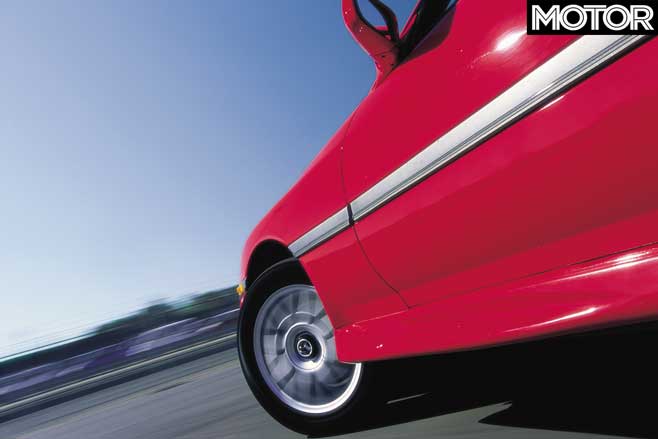
Here’s the good news if you decide to persist with all this. A Supra is a Toyota, right? Three words: Never; Breaks; Down. Okay, almost never, but it’s true that the engine and gearbox are missile-proof, even with the turbo gusting down the inlet manifold at regular intervals. Just make sure there’s some kind of service record involved, because even Toyotas eventually die if they haven’t been cared for.
Those tricky electronic dampers are a decent bet to pack it in, but since they’re crap anyway, they’ll be doing you a favour by carking it and forcing decent replacements dampers and springs upon you.
The interior trim seems to stand up pretty well to daily abuse, and the Supras we see still running around don’ t seem to have the dodgy panel {it that can afflict some of its contemporary, Nissan’s… err… cars.
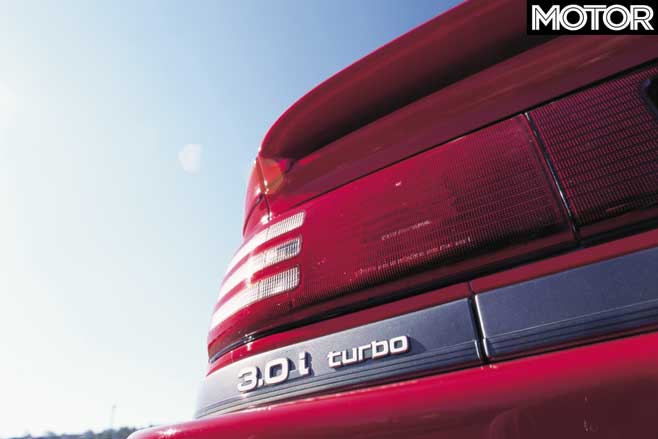
FAST FACTS 1986 Toyota Supra Turbo ENGINE: 3.0-litre inline-six, 24v, turbocharged BORE/STROKE: 83.0 x 91.0mm COMPRESSION: 8.4:1 POWER: 173kW @ 5600rpm TORQUE: 344Nm @ 4800rpm WEIGHT: 1590kg POWER-TO- WEIGHT: 109kW/tonne TRANSMISSION: 5-speed manual/ 4-speed automatic SUSPENSION: Independent, coil spring, anti-roll bar (f & r) L/W/h: 4620/1745/1300mm WHEELBASE: 2595mm TRACKS: 1485/1480mm (f/r) BRAKES: 302mm ventilated discs (f); 291mm solid discs (r) WHEELS: 16.0 x 7.0-inch (f); 16.0 x 7.0-inch (r) TYRES: Goodyear Eagle, 255/50VR16 (f & r) PRICE: $60,000 (1986 approx.)
What we said
“The engine is more flexible than previously and can be left in higher gears for longer periods if the driver is feeling lazy. The overall sensation is of continuous thrust.” -Ewen Kennedy November 1988
“The Supra has exceptionally good handling. Its well-weighted steering transmits excellent feel, but at the limit it tums macho. Initial understeer is quickly followed by tail-out oversteer. It has the turbo rush of a (Series IV) RX-7 but transfers its weight in cornering more sharply and has more body roll. The gear change and clutch are heavier, too.” -James Cleary, February 1990
She’s mine!

”I couldn’t see myself in any other car. I just love the shape, they’re so unusual It took me more than four months to track down this one, because I wanted a 3.0-litre turbo and a targa top. I wanted a manual, too, but it was impossible to get all three. I must have checked out 25 cars. ”This is my second Supra; I had a Japanese-spec late ‘80s model that I sold on to get this one. I just drop it off at Toyota for servicing with no worries at all This won’t be my last Supra, that’s for sure. So, when do I get paid for this?” -Ciaran Jordan

